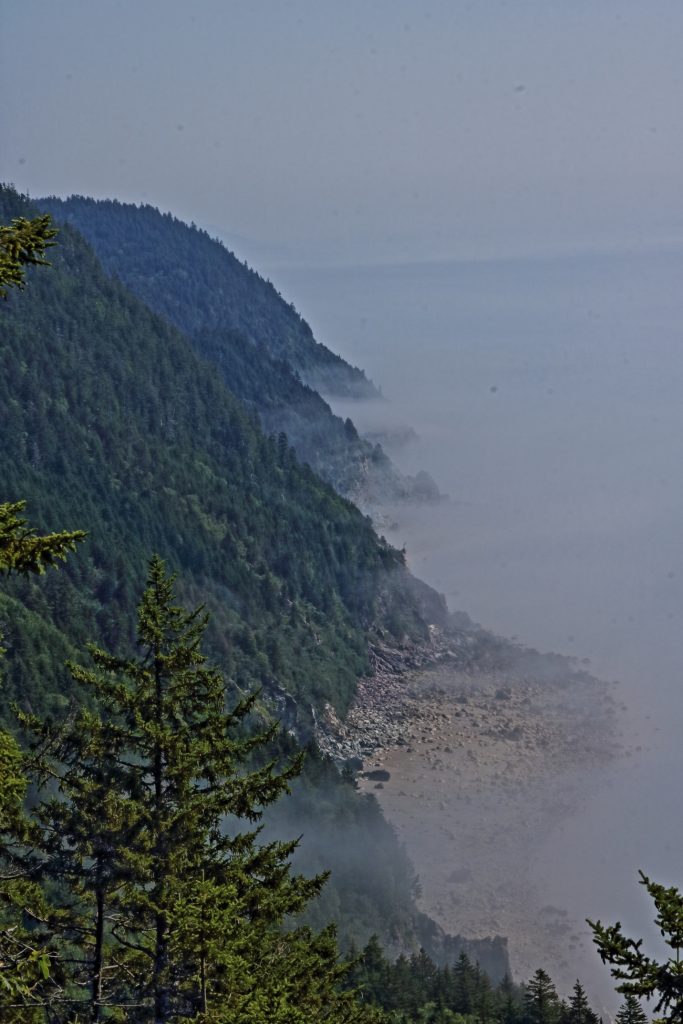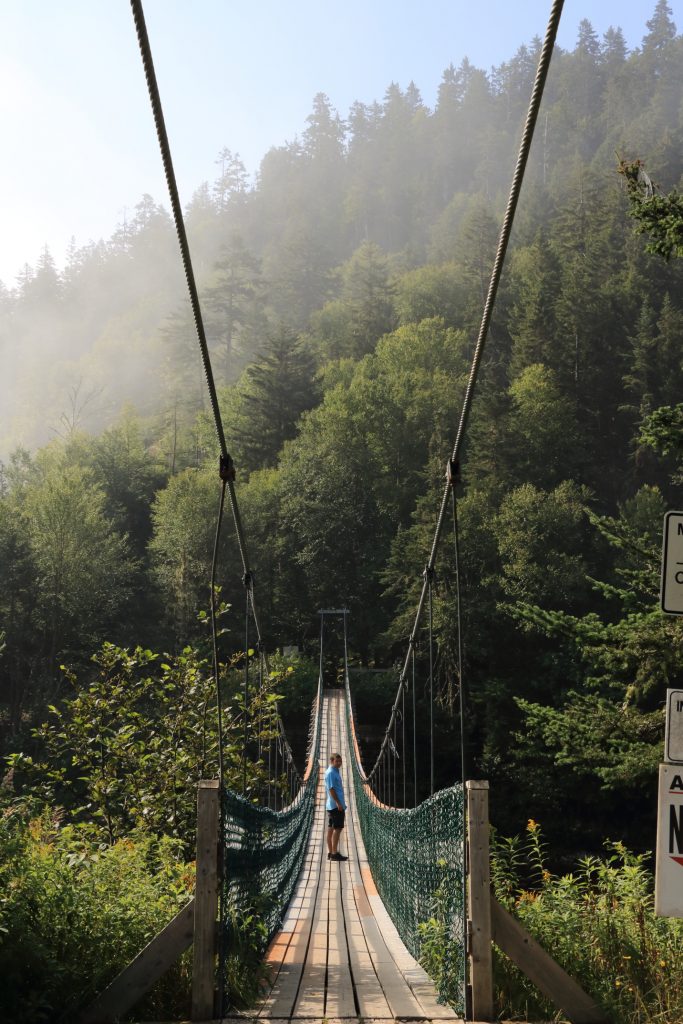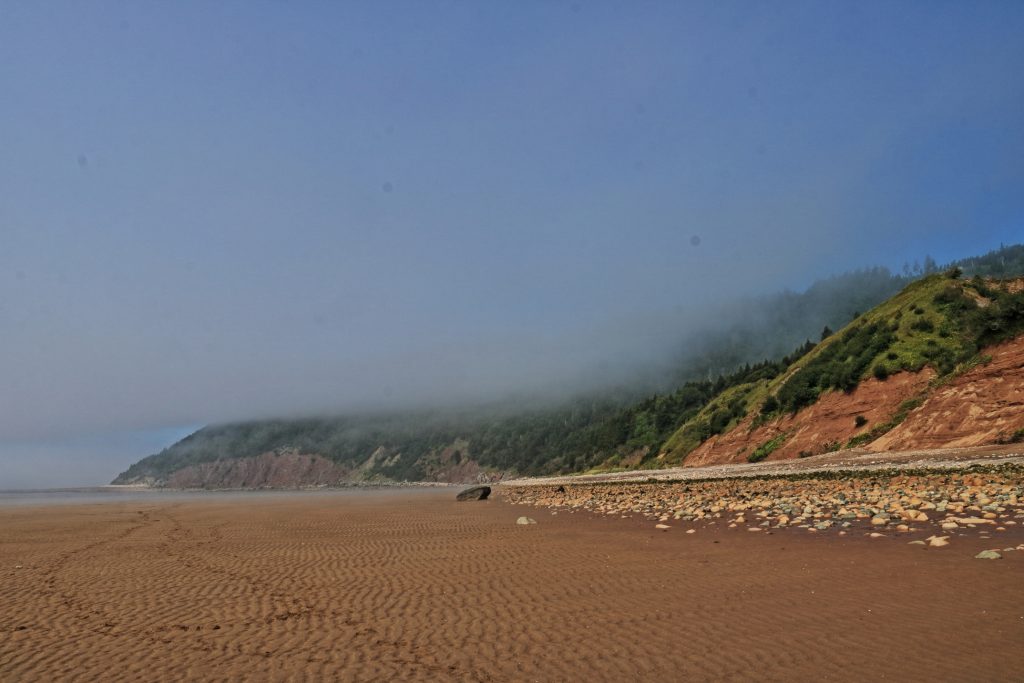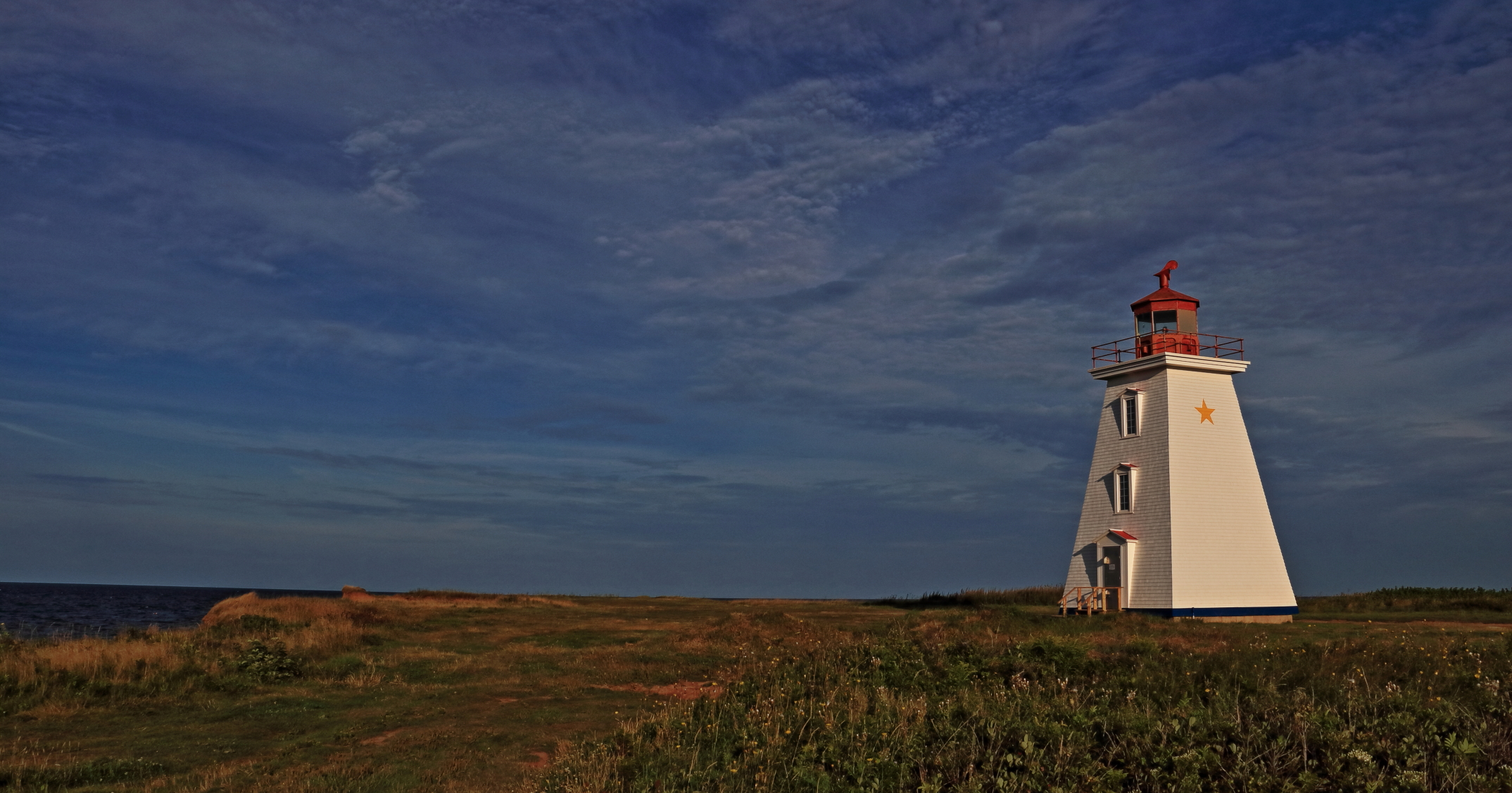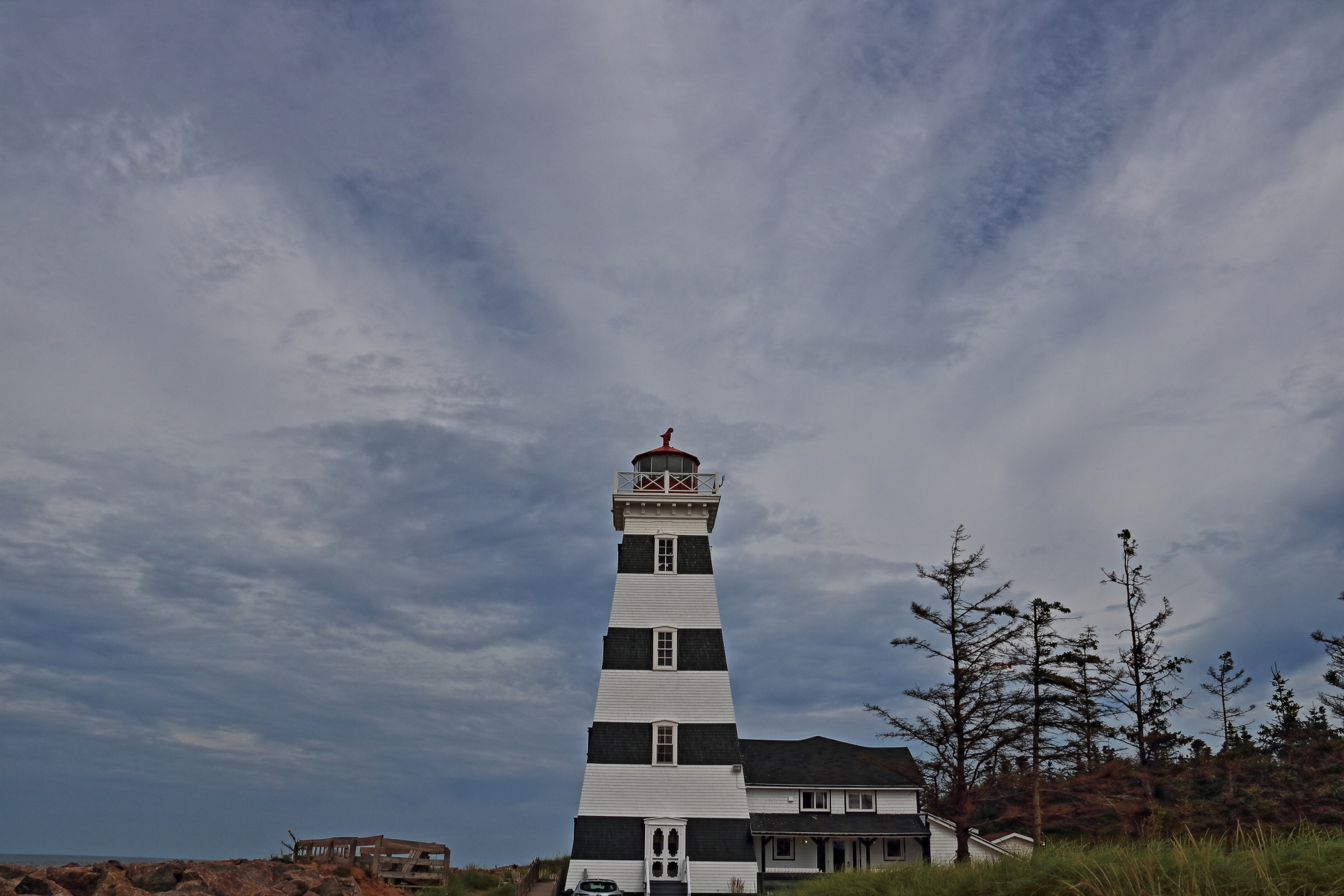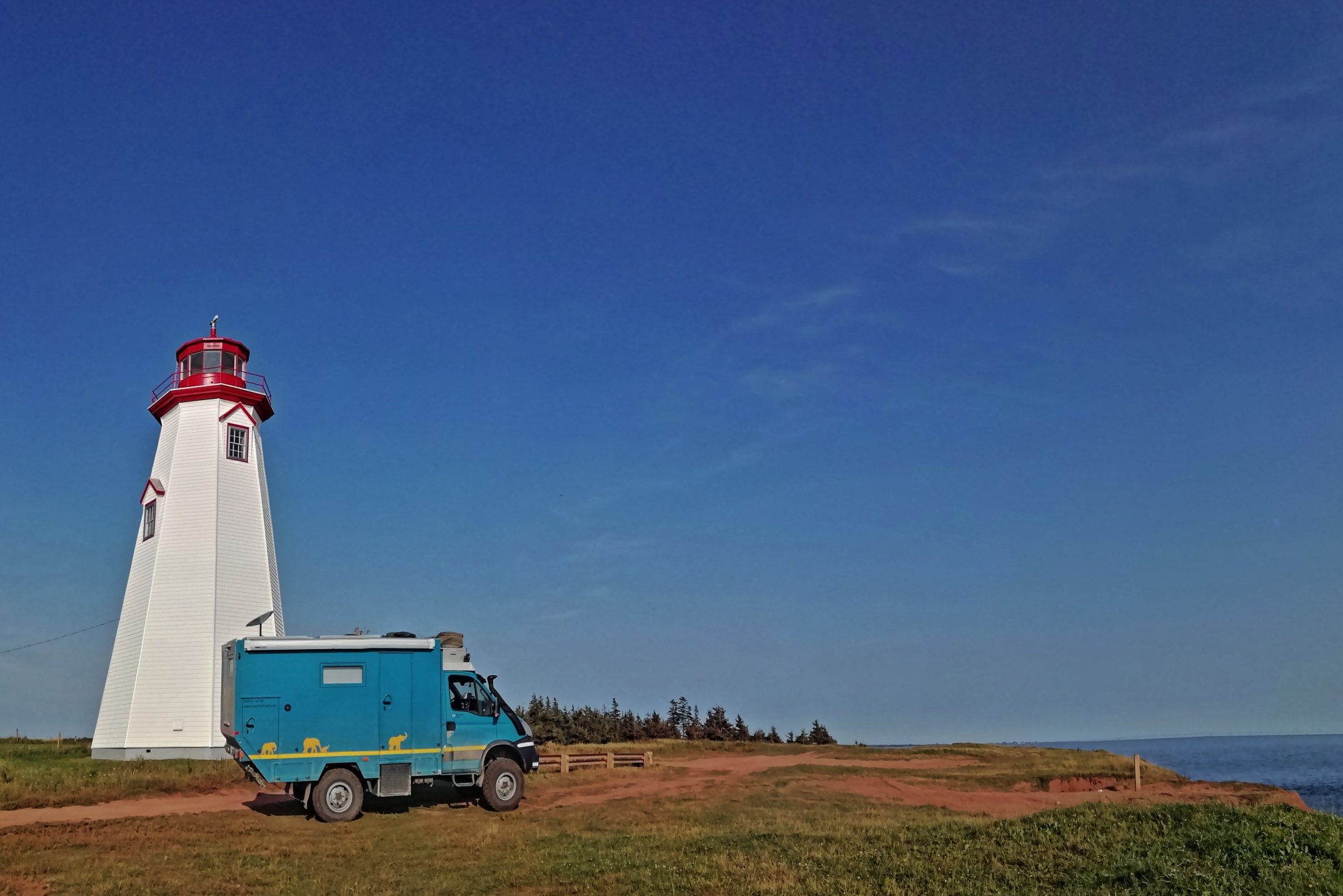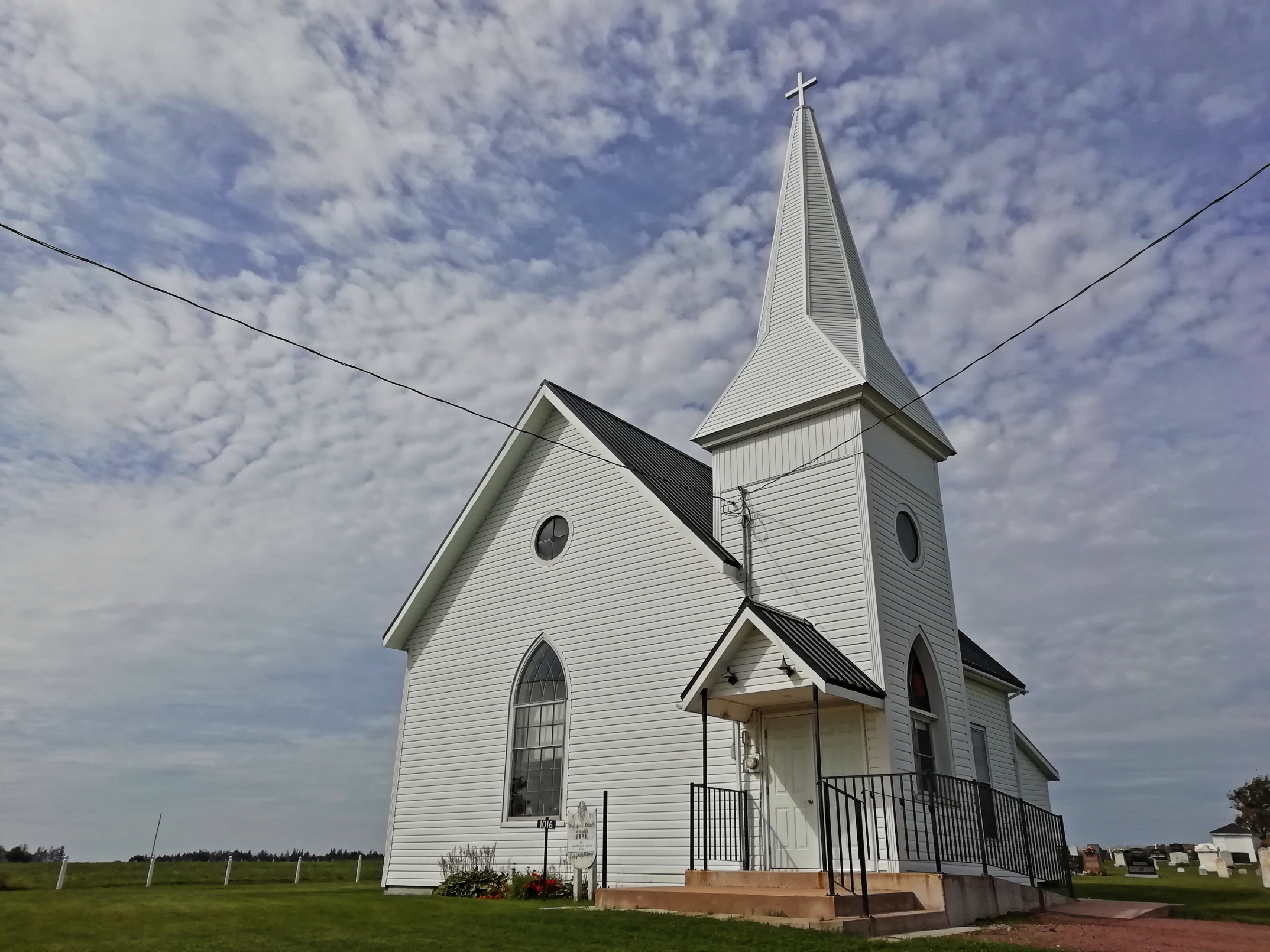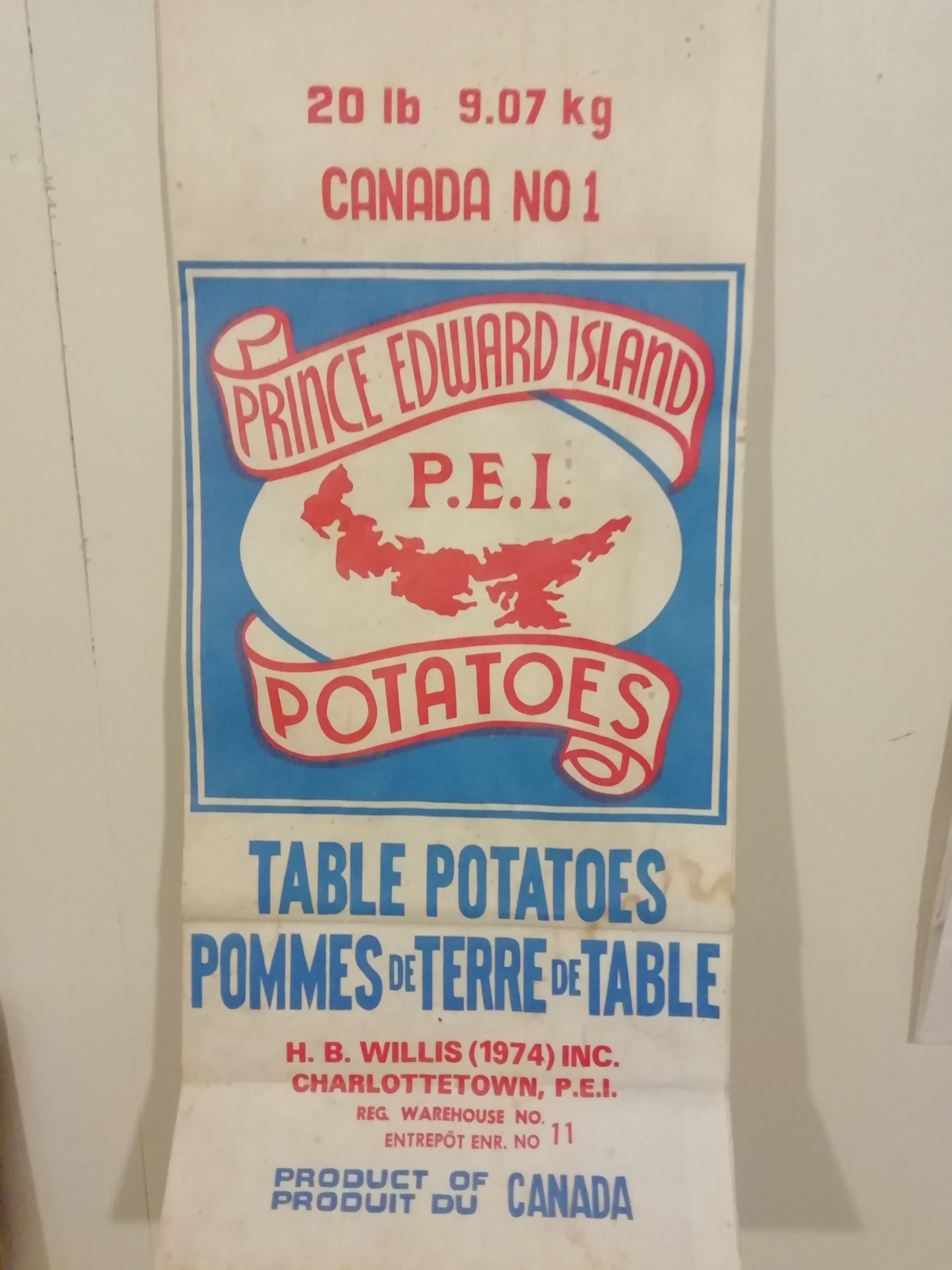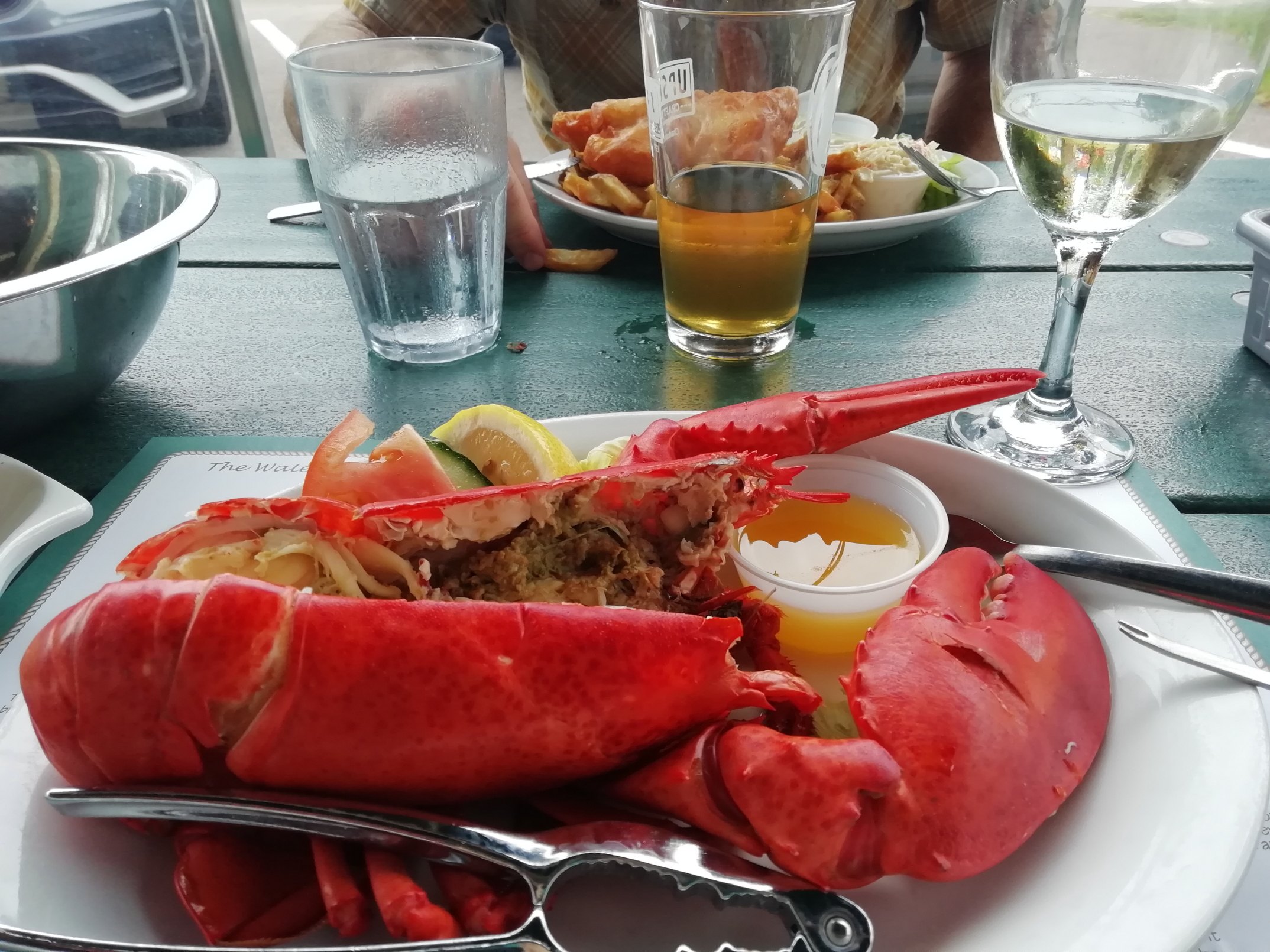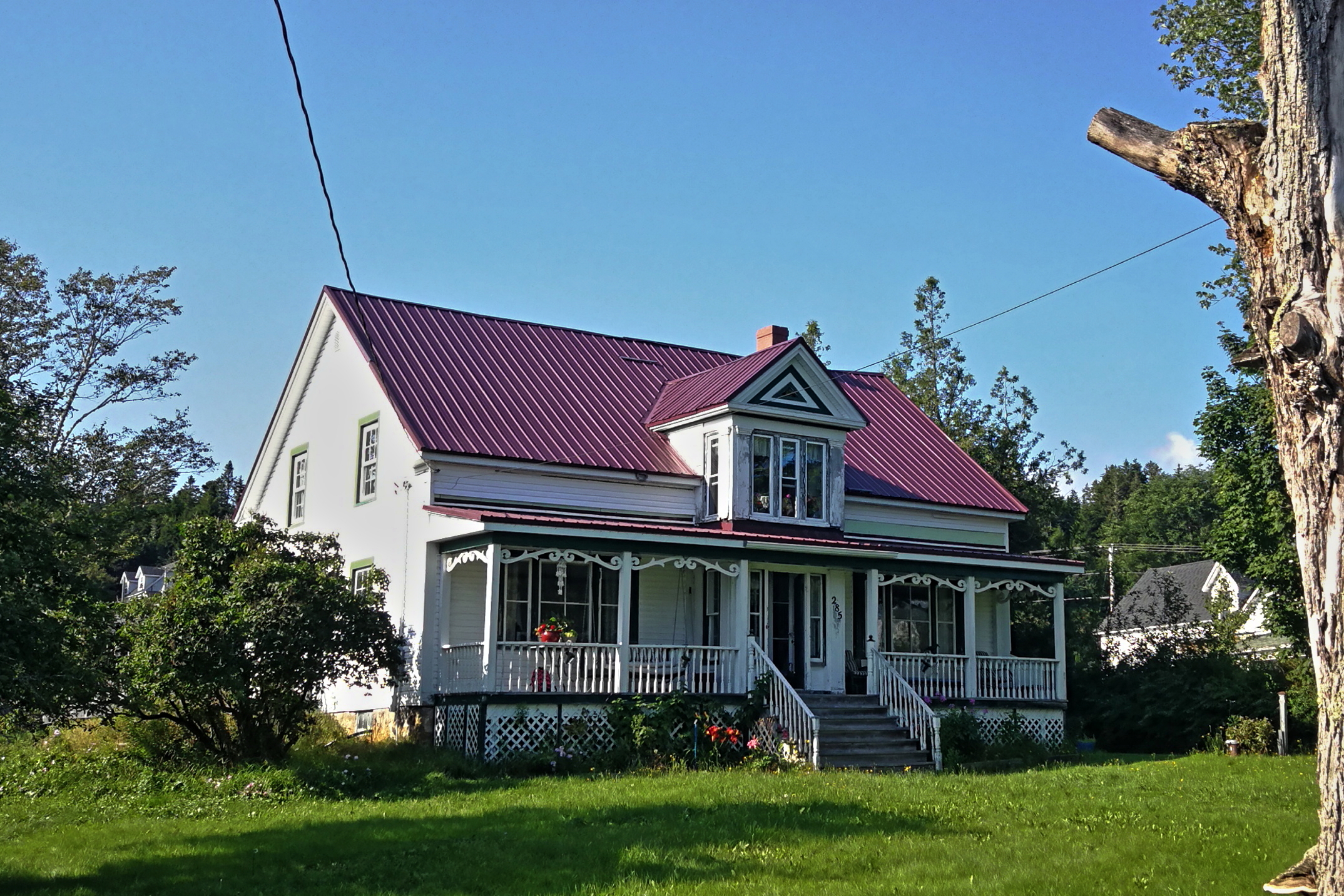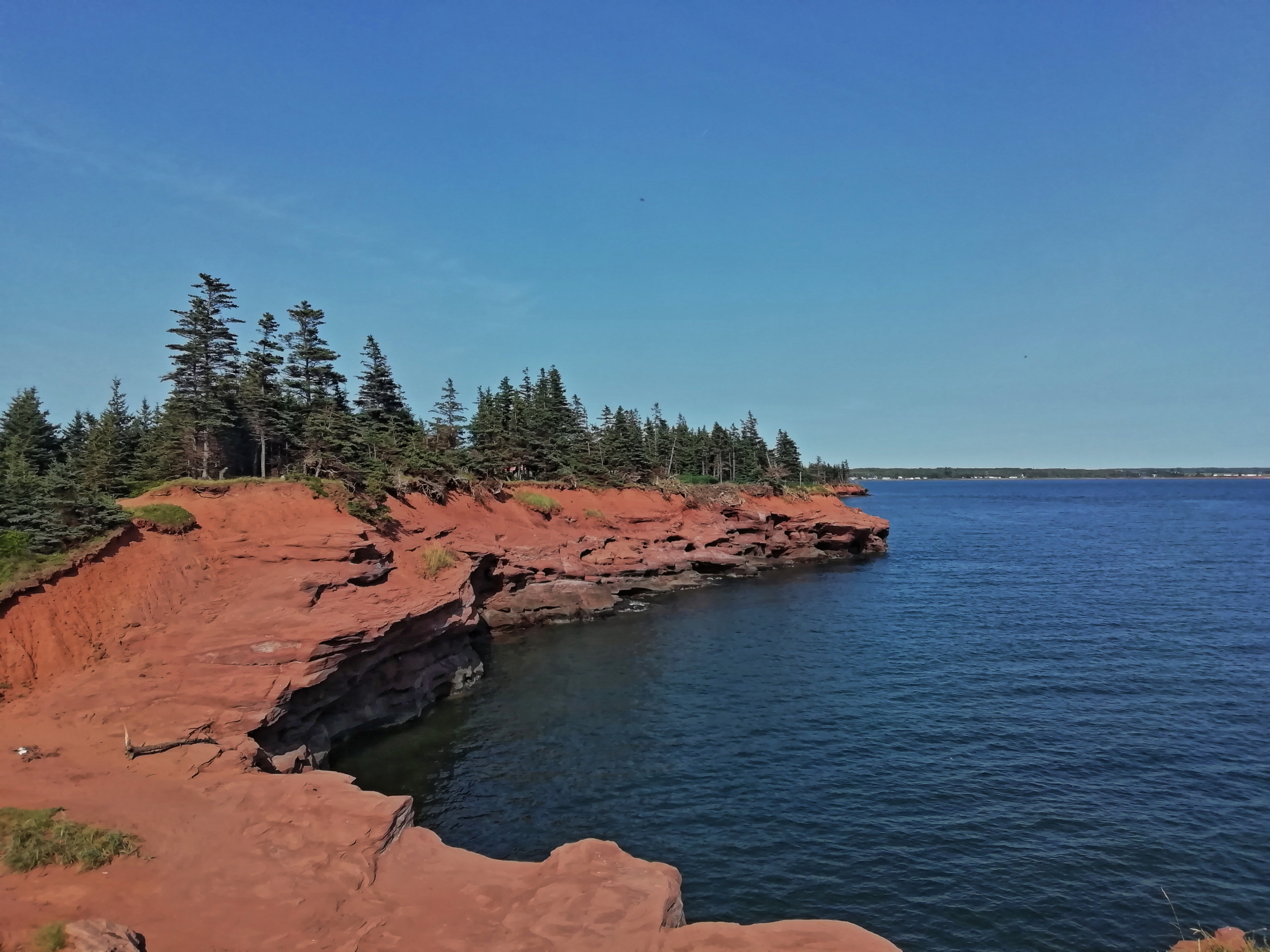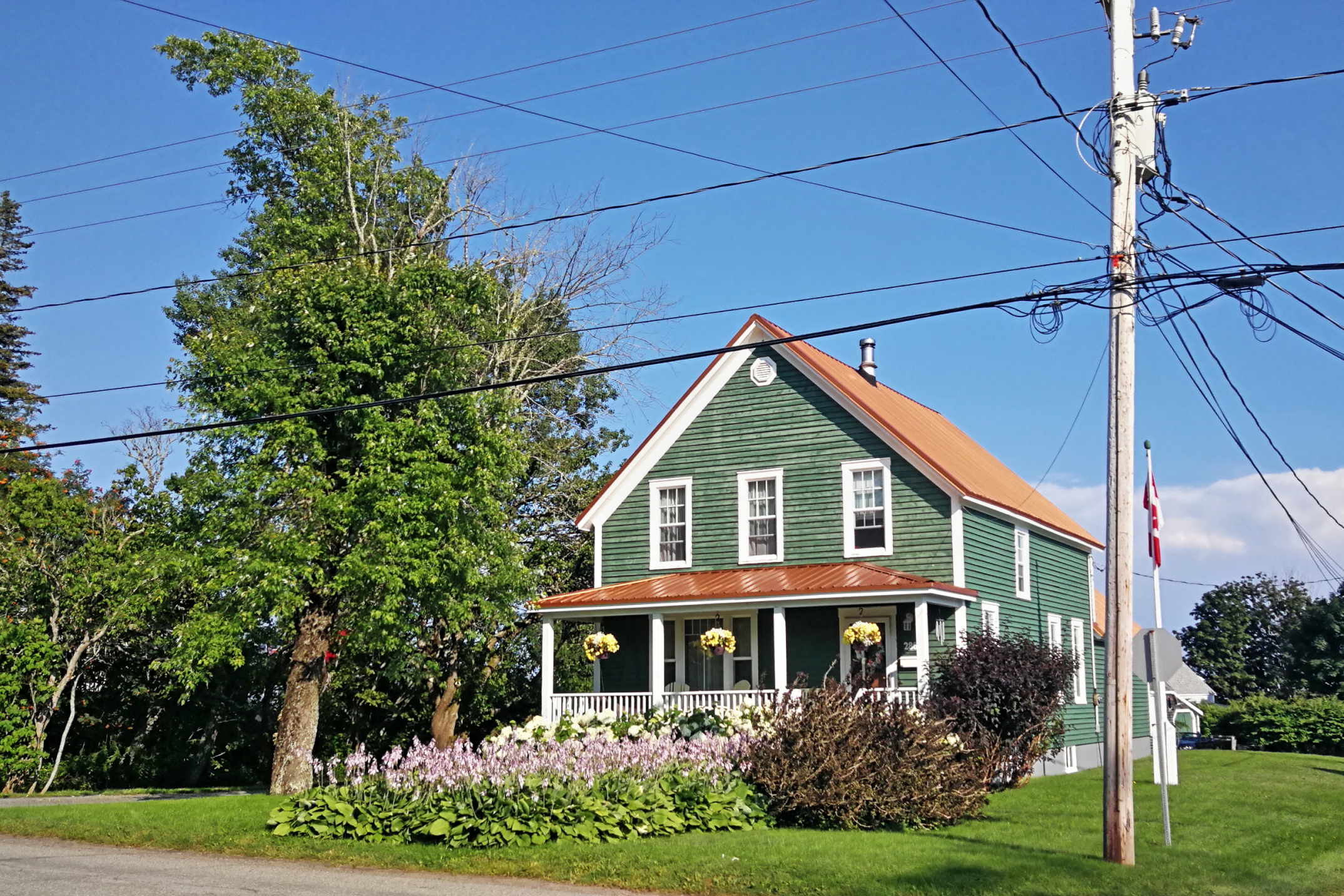Driving over 5,000 km across Canada we’ve been looking forward to the famed coastlines of New Brunswick, Prince Edward Island, Nova Scotia and Newfoundland/Labrador (a.k.a. ‘the Maritimes’)*. Well, we made it! Overlanding the Maritimes in NB and PEI we predictably find many lighthouses and a lot of lobster. But there are potatoes too, shed-loads of potatoes. And just a bit of a tidal bore.
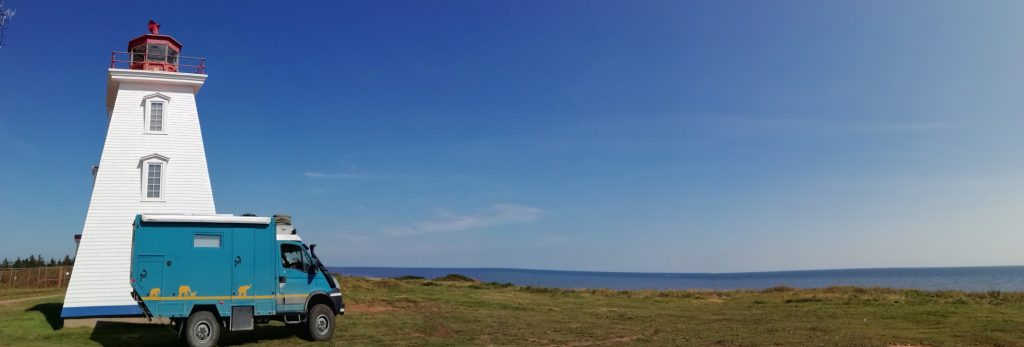
Maritimes: Getting In
One of the problems we faced as we schlepped across to the Maritimes, was that we weren’t sure we would be allowed in when we got there. The covid restrictions of the ‘Maritime Bubble’ have been tight throughout the pandemic, but we heard they were starting to open-up. New Brunswick has dropped all entry restrictions, so that’s handy given it’s the first one on our route!
As we approached New Brunswick we decided (in a rare example of us planning ahead with our travels) to make the on-line application to get into our Maritime No.2: Prince Edward Island. Success! We received (provisional) approval, so that gave us hope that we would see at least two of the four Maritimes. We also need to apply to enter Nova Scotia and Newfoundland/Labrador, but we decided to kick that proverbial can down the road a bit and wait to see what happens (such procrastination is much more characteristic of our typical overlanding ethos 😉).
Land of Potatoes
Our target destination in New Brunswick was the Bay of Fundy coast, but en-route we did a scoot around the province. First we checked-out the pretty Kouchibouguac National Park and then across to potato land.
Now… the humble potato (known affectionately in UK as the ‘spud’) is the third most important food crop in the world, and a fair chunk of that spud crop is grown here in the Maritimes. In New Bruswick the wonderfully named town of Florenceville-Bristol is the beating heart of the global chip/french-fries industry. For a mind-boggling bit of trivia, you might care to know that the McCain factory in Florenceville-Bristol produces one-third of the world’s supply of chips/french-fries. It churns out 453,600kg of chips, not per week, not per day, but per hour. Yes, over four and a half thousand kilos of chips every hour!
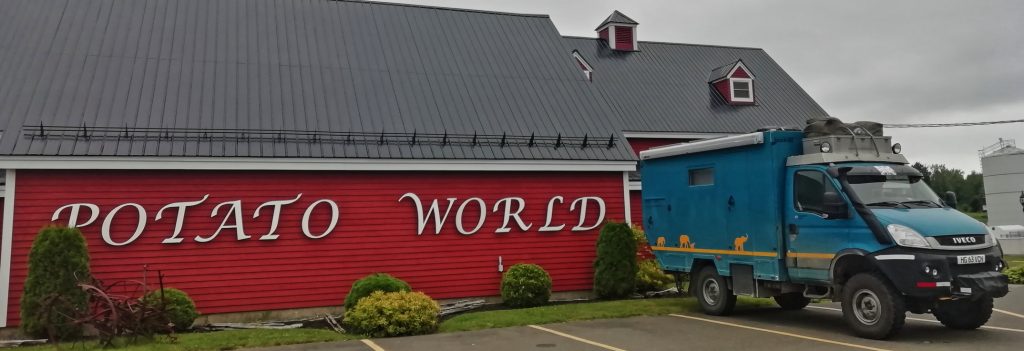
Outside the McCain factory is the predictably named: Potato World Museum. And there’s a café in which the visitor can eat… no prizes for guessing… chips. Now that’s got to be worth a visit, eh? The museum was interesting enough covering spud-history etc, but it was a bit ‘dry’ and lacked a certain je ne sais quoi. Imagine our disappointment to learn that there wasn’t even a ‘World’s Largest Potato’ or a ‘Mr Potato Head’ at which to marvel in the car-park 😉. A missed opportunity we thought, to generate a bit of fun around the subject and educate kids about agriculture, food production and nutrition. But at least the chips were tasty!
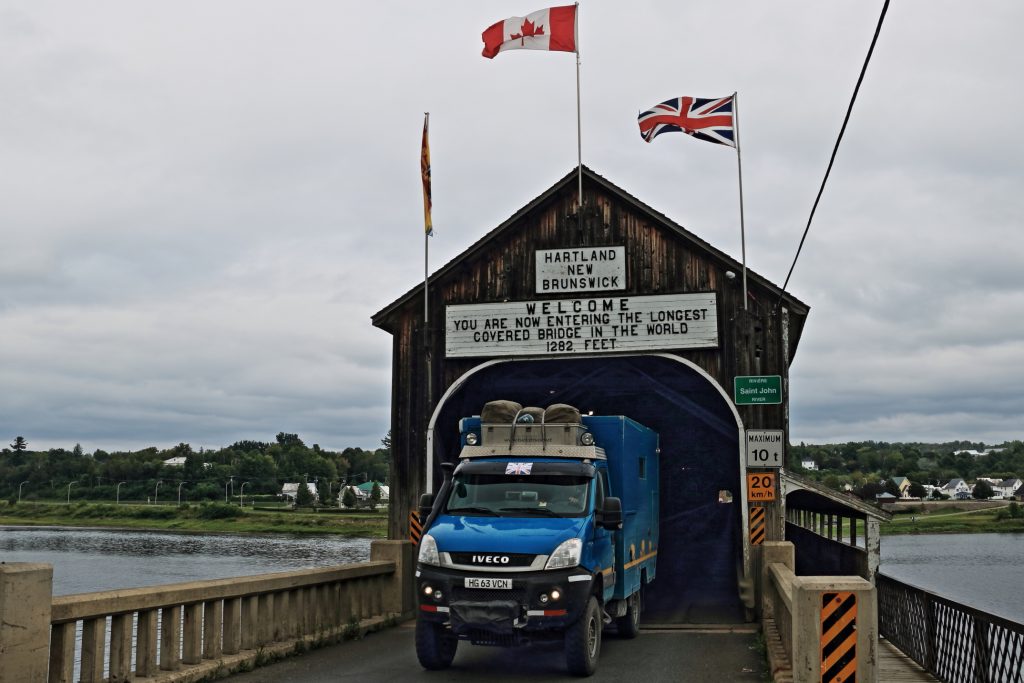
Just down the road from ‘spud-world’ is Hartland, a worthy stop to see a covered bridge. Oh, they love a covered bridge in the Maritimes, there are several around the area (I guess it says something about the winter climate here!) but here in Hartland is the world’s longest covered bridge, 1,282ft long. We feared that when we got there it would be too small or too weak to take Cuthbert’s 5,900kg, but fear not… it was fine. Cuthbert could join in this world exclusive short trip across the St John River.
Bay of Fundy: North-side
We have a vague recollection of learning at school about the Bay of Fundy: a large inlet between New Brunswick and Nova Scotia. It has the largest tidal range in the world which generates an impressive tidal bore (a tidal what? Don’t worry we’ll explain later 😉). The Bay of Fundy is also said to have a particularly scenic coastline with lots of lighthouses and lots of tasty lobster (enough of the potatoes already).
Bay of Fundy coastline and scenery – that tide goes out a long way here!
We joined the Fundy north-side and followed it all the way along from west to east. It’s a great drive – one of those routes where you just have to keep stopping to gawp. If, like us, you are up for some short hikes to lovely view-points, then the Fundy Trail Parkway and the Fundy National Park are perfect destinations. If, unlike us, you’re young, fit, and keen enough for a mega-hike, you could link it all together into one marvellous multi-day expedition and hike the whole Fundy trail along the coast in a one-er. Kudos to you if you do that! Whichever way you do it, we highly recommend you take a pit-stop in Alma for the most scrumptious lobster rolls on the planet (believe us, we’ve done our in-depth practical research on this, we know of what we speak here 😉).
At the eastern end of the Fundy-northside is the photogenic hotspot of Hopewell Rocks. Here the tide has bashed-away at the coastline and left a string of curious rock formations along the beach. Unless you want to get rather wet, they’re only accessible at low tide, but it’s worth waiting for the water to disappear to wander around them.






Lobster Large
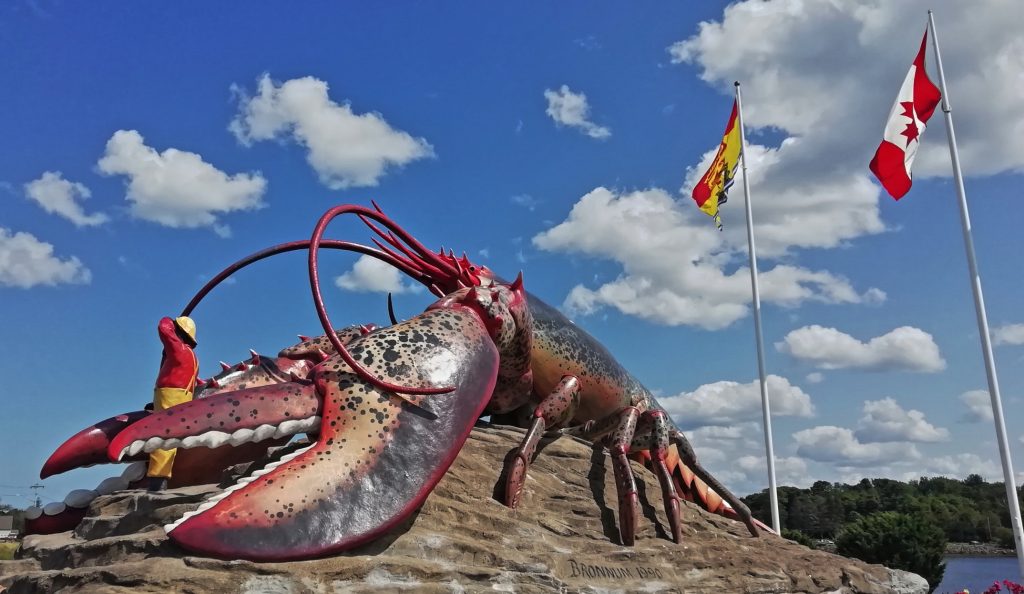
We’ve mentioned in previous blogs how Canada just loves a ‘World’s Largest [whatever]’. Doesn’t matter what the whatever is, provided it’s the world’s largest. There are loads out there across Canada, but for a little smorgasbord selection of ‘World’s Largest’ we’ve seen: BC has a fishing rod, Alberta has a pierogi, Saskatchewan has a red paper clip (🤷♀️) and Ontario has a goose. Not to be out-done, New Brunswick has gone-large on what else, but the lobster. Yes, the World’s Largest Lobster sits in a park in Shediac patiently posing with a queue of selfie-takers. And in anticipation of any Canadians contacting us about the World’s Largest Hoe… yes, we’ve seen the TV programme, very funny, thanks 🤣.
Boring Tide
Now to that ‘tidal bore’ thing we promised to explain. It’s a natural phenomenon where the incoming sea tide is so powerful that it forces back the rivers flowing into the sea, causing them to reverse-flow, with a tidal bore-wave rushing up-stream. Weird huh? As the Bay of Fundy has the highest tidal range in the world (up to 15m/49ft), it’s a perfect place to see a tidal bore in action.
It doesn’t take a PhD in Wavy-Stuff to predict that the tide comes in twice a day. But it does, we learned to our cost, take a bit of hunting around to understand tide tables and lunar-cycles generating the most impressive tidal bore waves. At St John, New Brunswick we spent (ok… wasted) time trying to see a promised ‘impressive wave’. Unfortunately, it was neither ‘impressive’ nor a ‘wave’. All we saw was a few brief whirly-bits in the water ☹
The thing is, we hadn’t done our smarty-pants homework. Mistake No.1: St John near the mouth of the Bay of Fundy is not the best place to see the wave. The best places are at the far-end of the Bay where the range of tide is much higher. Mistake No.2: it was not the best time in the lunar cycle for a powerful tide. We needed to wait a few days for the moon to get of its backside and align itself for an ‘optimum bore’.
Rather than hang around waiting for the lunar-cycle to catch up with us, we decided to do a little tour around nearby Prince Edward Island and come back to the Bay of Fundy when ‘the wave’ was ready to perform.
Bridging Queue
Would it blow your mind if we told you that Prince Edward Island (that’s PEI to his mates) is an island 13 km off mainland Canada, but that you can drive there? Yup, since 1997 the Confederation Bridge is the longest bridge in Canada. It runs 13 km over the water from New Brunswick to PEI.
There are strict Covid controls to enter PEI. As you launch over the bridge, there is a huge warning that the $48 bridge-toll will still be payable to return to the mainland, even if you are rejected on arrival for covid reasons. We kept our fingers crossed that our electronic ‘provisional’ approval would do the trick.
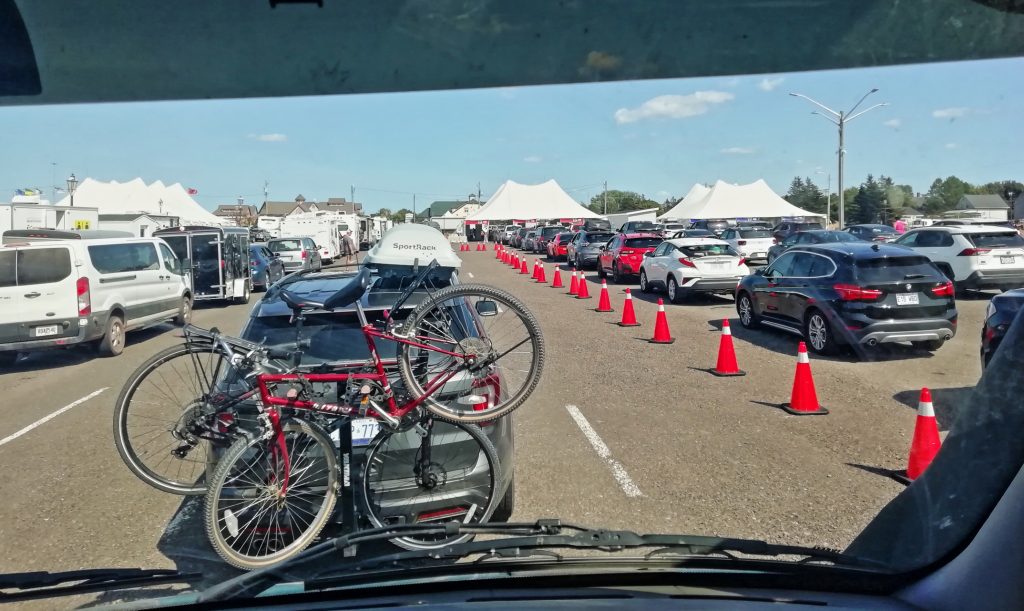
The queue after crossing the bridge was huge. We joined the line-up and waited. And waited. They seemed to be asking people a lot of questions. Nurses in PPE fit for a hospital operating room were carrying out testing. When we eventually got to the front, they asked a load of questions and seemed a little concerned about our status, what with us being a Johnny-Foreigner and all that. But after a few clarifications and one person in the vehicle doing a Covid test (step forward Marcus to have a swab rammed up his nose), we were free to go. Yeahy!!
PEI Potatoes
So how was it on PEI? Well… it’s a cute place and worth a visit, but even by English standards, it’s tiny! It’s Canada’s smallest province and the driving distances are short. But if we tell you it’s a lot like New Brunswick, you might guess we found lighthouses, lobsters and potatoes! 😂
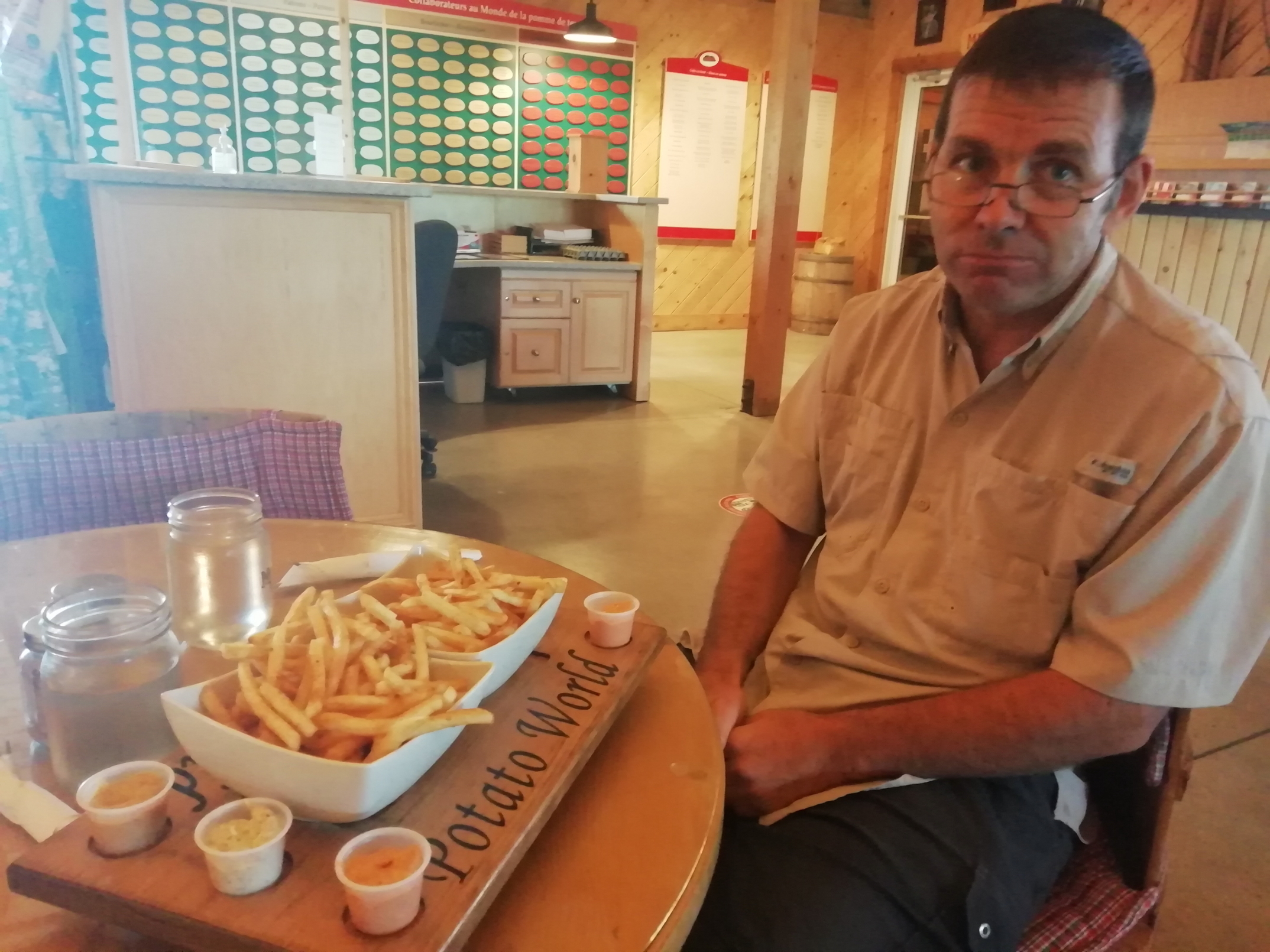
The lighthouses are unmanned, often at the end of dirt-tracks on wild-coasts, so they make great overnight camp-spots for us. The lobsters are scrummy (we had to try plenty to compare). And the potato fields stretch as far as the eye can see. But not only does PEI have potatoes like NB, it has a potato museum like NB too. We just had to go compare.
If pushed to commit to a winner in the Global Potato Museum Championship League, we’d say ‘Team PEI’ has probably won this year’s cup. There’s just a bit more personality and humour in the PEI place. But on the other hand, the chips were better in the NB museum, so it’s a tough call 🤔.
PEI to Fundy
It’s not strictly true to say that PEI is just like NB. It does have a different vibe and it’s deservedly popular with Canadian families as a holiday destination. The north-coast of the Island in particular has amazing beaches. And the capital, Charlottetown is a wonderfully preserved colonial town. We really enjoyed our few days on PEI.
The next province on our Maritimes tour was to be Nova Scotia. The NS covid on-line application process seemed a bit more comprehensive than PEI. We filled in the forms as best we could and clicked ‘Submit’ with our vaccination cards. The electronic ‘provisional’ approval arrived by return, so we can at least turn-up and see if they let us in.
Meanwhile… parked outside a PEI lighthouse, we used the magic of Starlink internet to arm ourselves with yet more blurb on the whole Bay of Fundy tidal bore palaver. It seems two of the best places to see ‘the wave’ are on the Nova Scotia, Bay of Fundy south-side. Truro and South Maitland sit on bottlenecks at the far end of the Bay where the tidal range is greatest. The water rushes-up there and apparently puts on a bit of a wave-show.
So it’s decided then… we’ll leave PEI and head to Nova Scotia. But will we get in??? And if we do get in, will we see the elusive tidal bore wave? Da, da, daaaah!!! Like all good instalments of a story, we’ll leave you hanging until ‘Overlanding Nova Scotia‘…
* Ooops… it seems we made a boo-boo here! Dann O’Kane kindly contacted us to let us know that ‘The Maritimes’ is considered to include only New Brunswick, Nova Scotia and Prince Edward Island. ‘Atlantic Provinces’ includes the Maritimes plus Newfoundland and Labrador. Thanks for letting us know Dann. And apologies to Canada… we’ll try harder to get our homework right in future! 🙏

